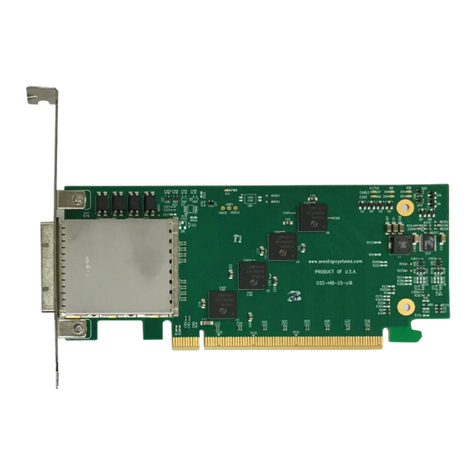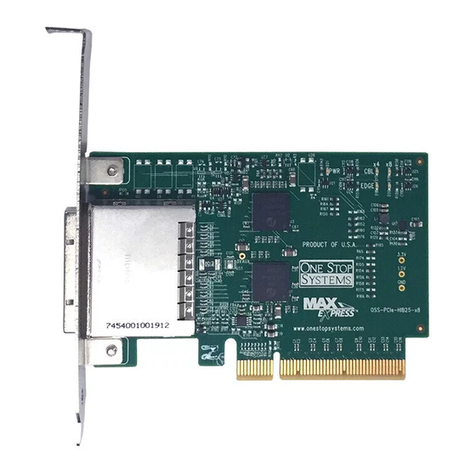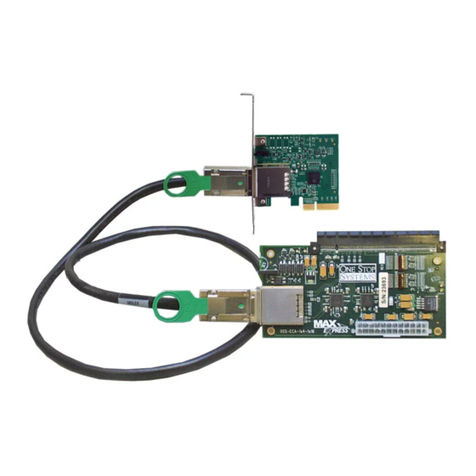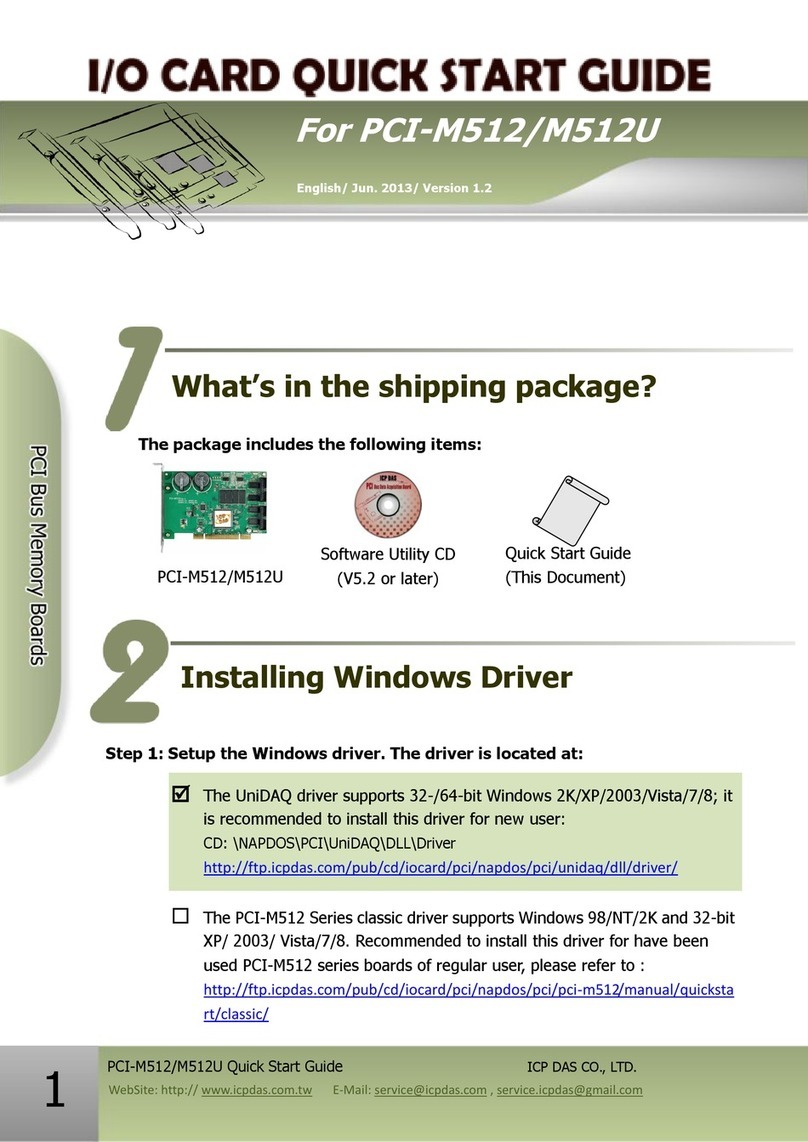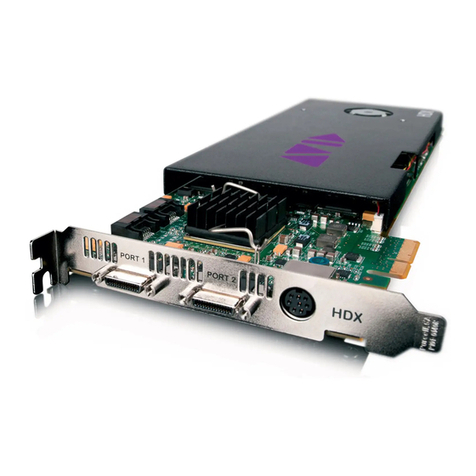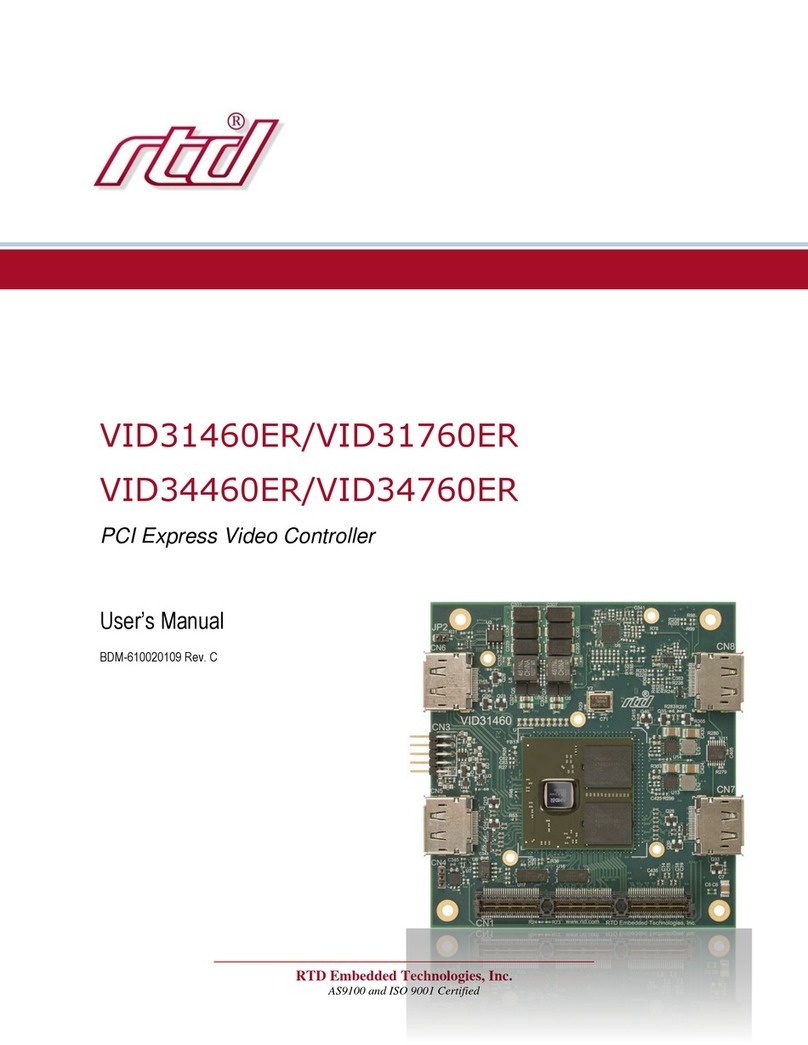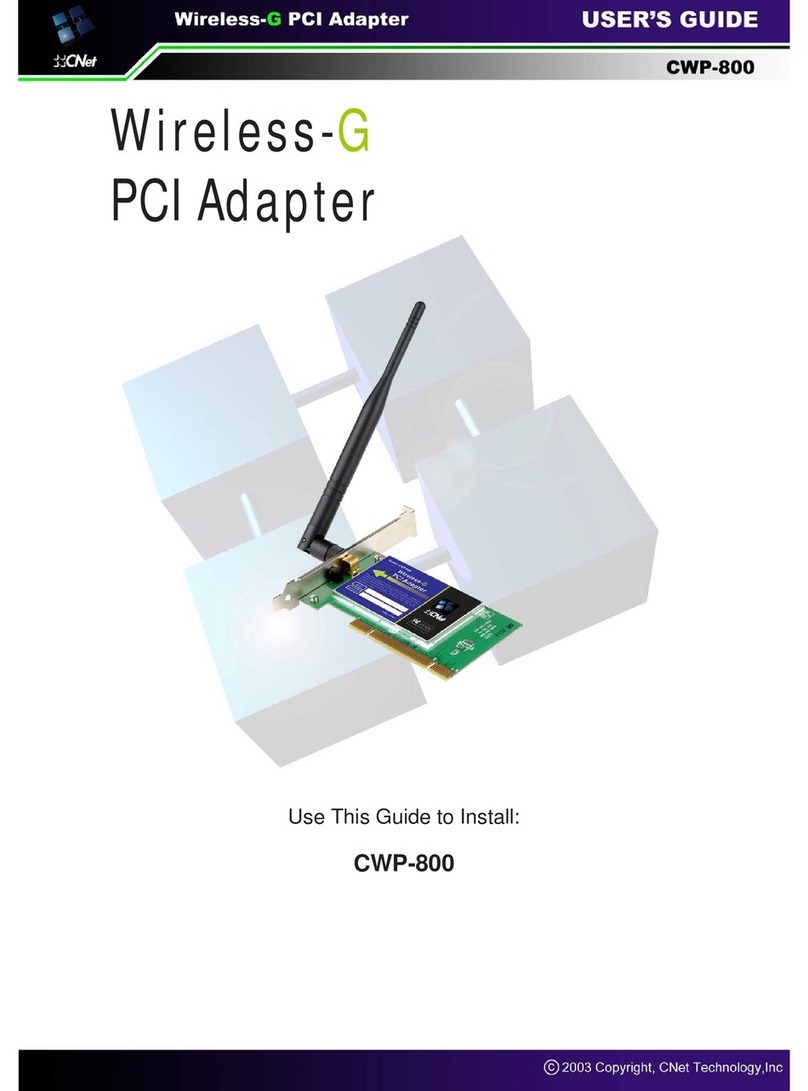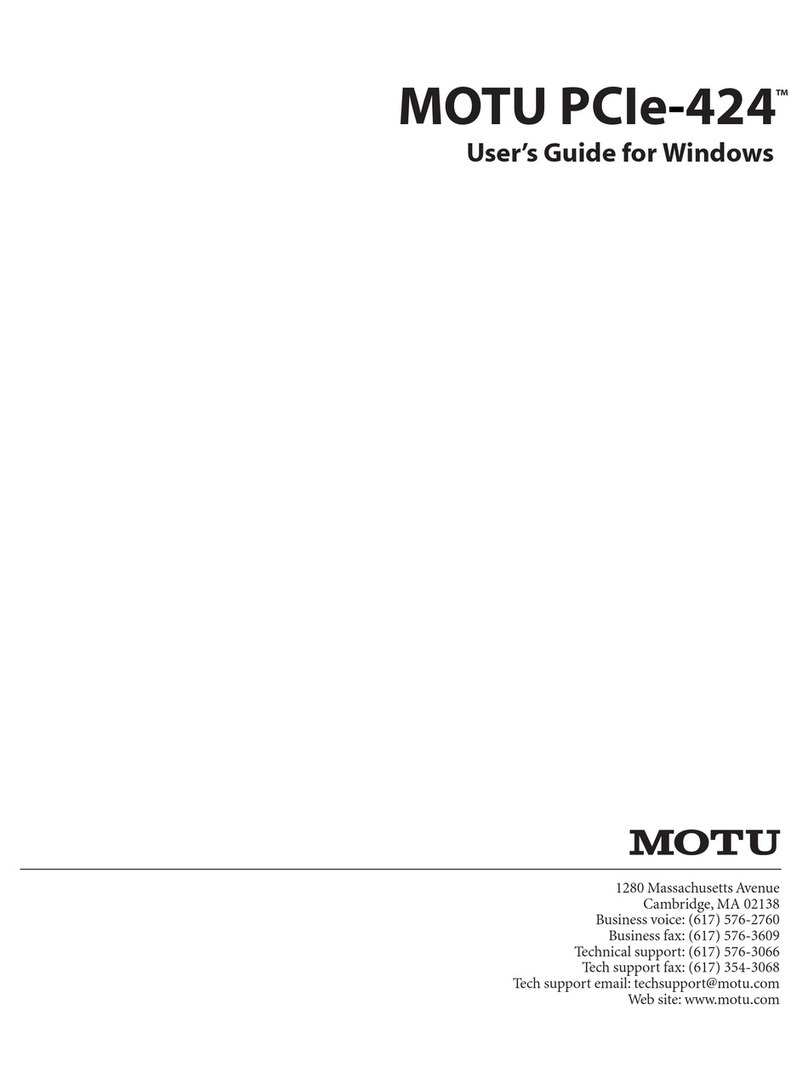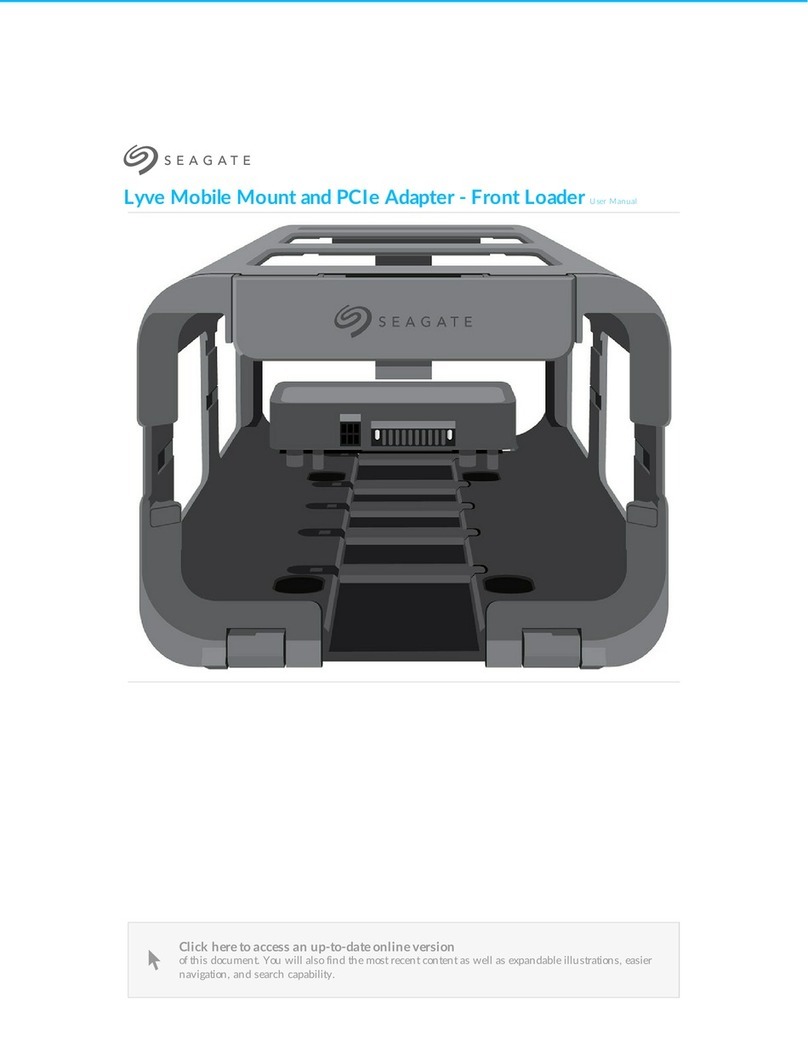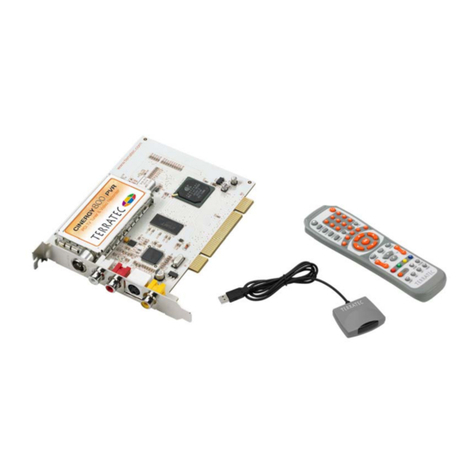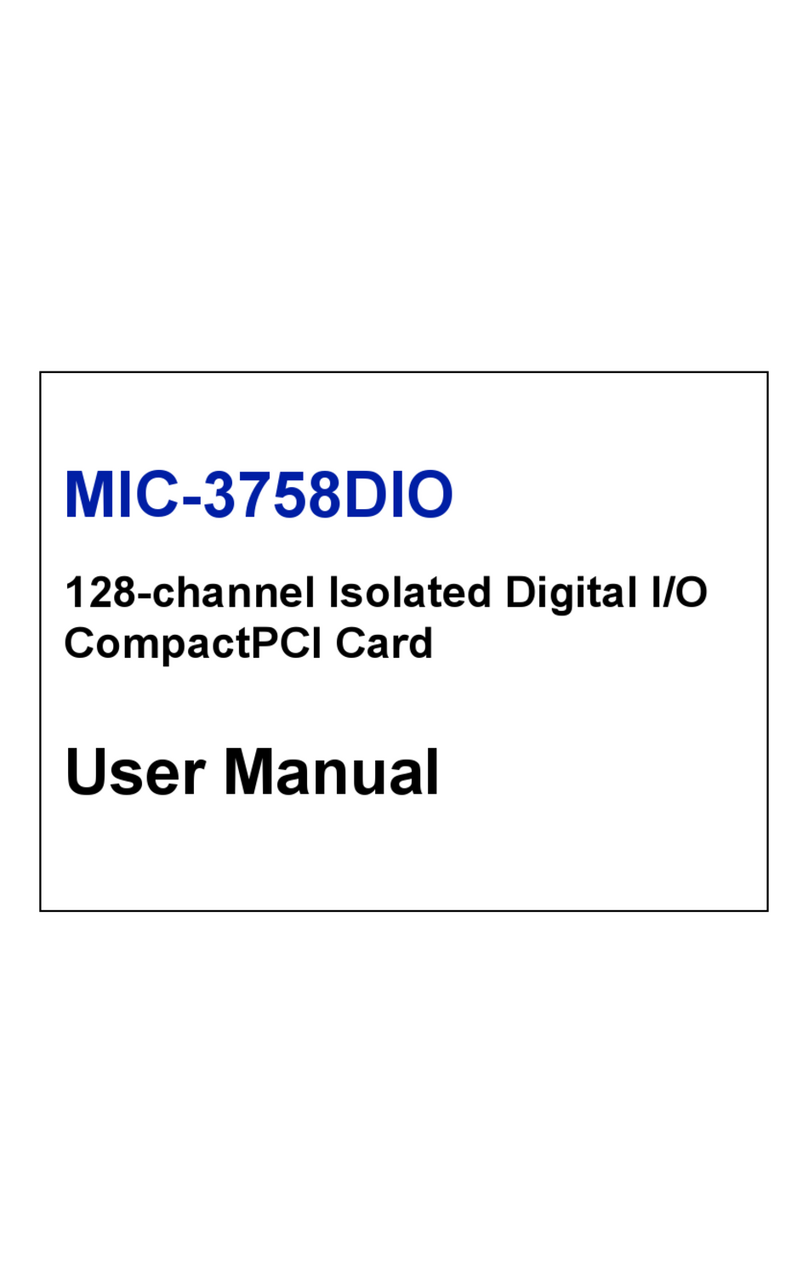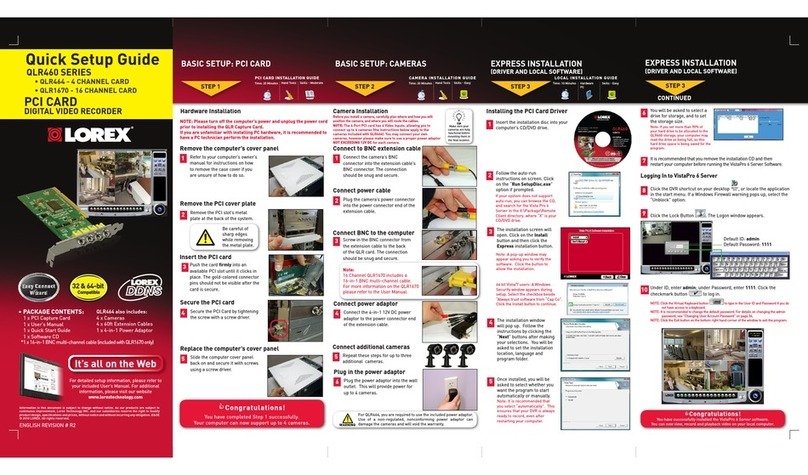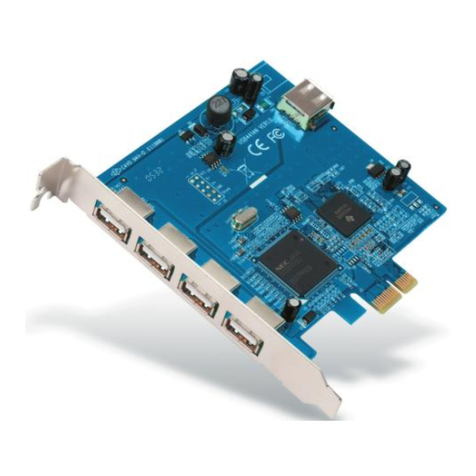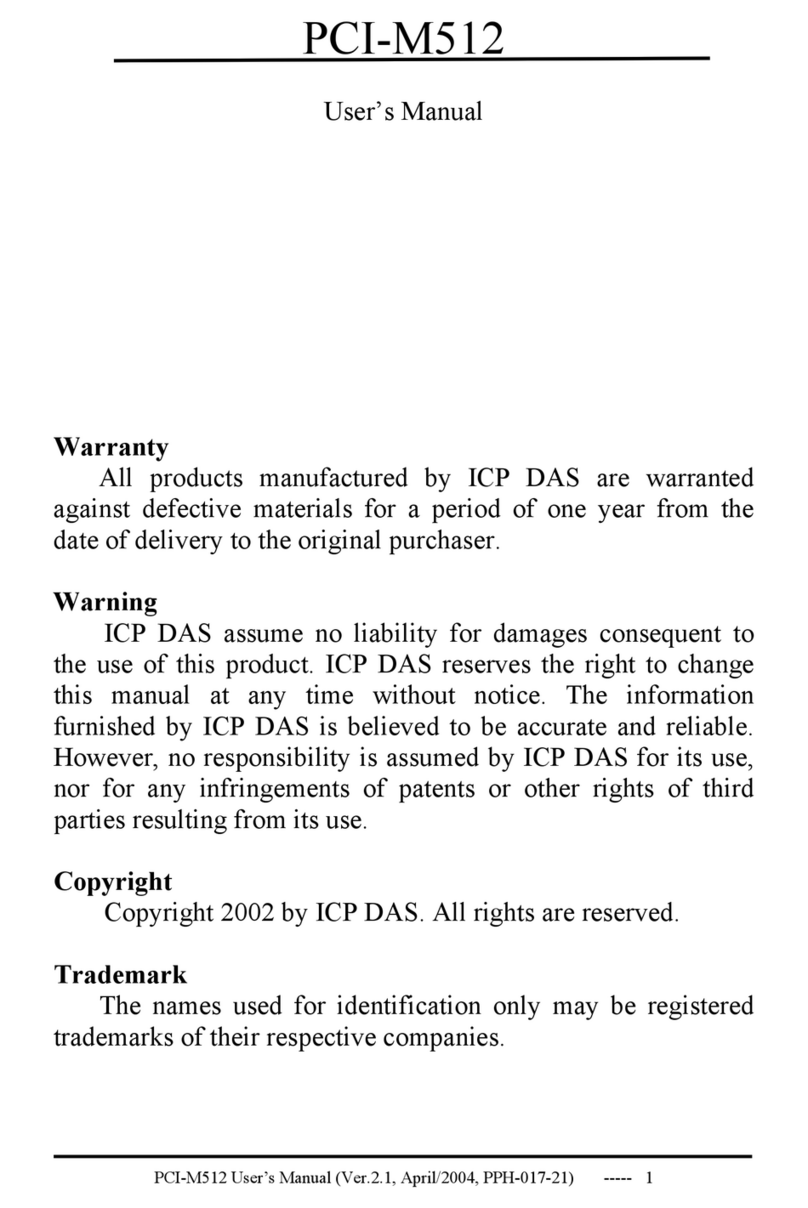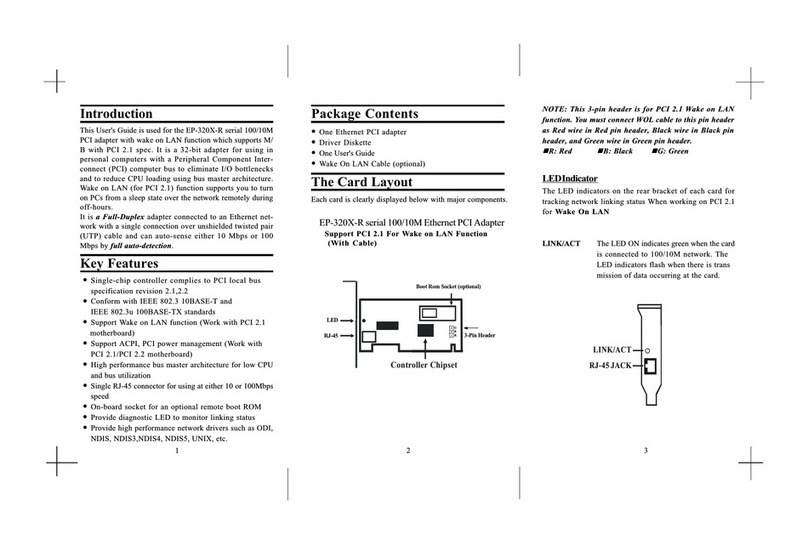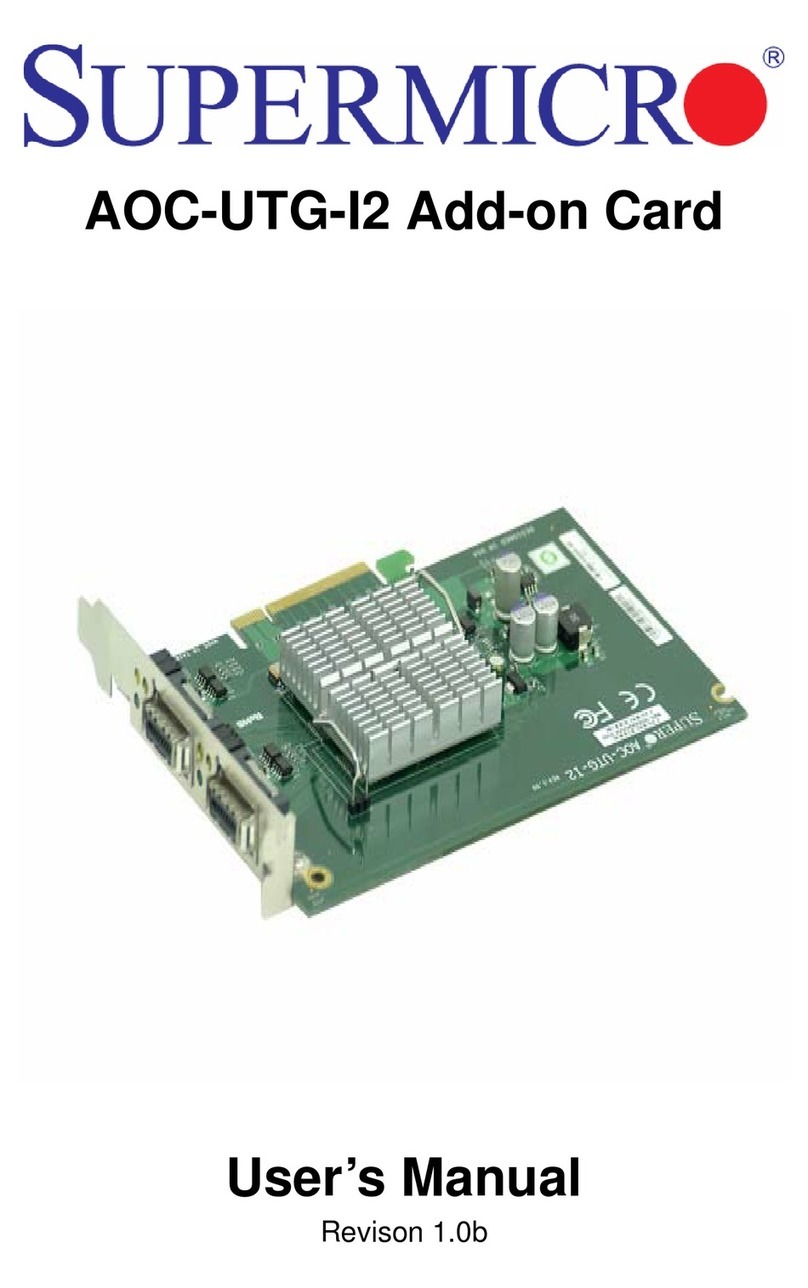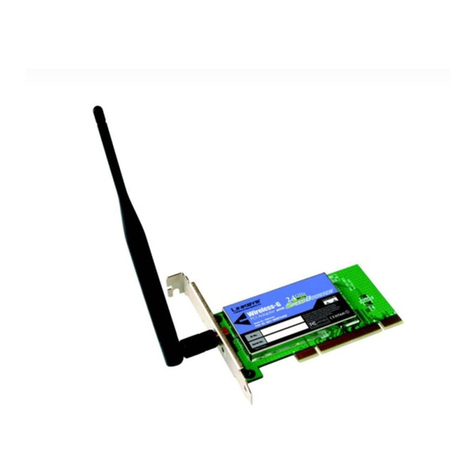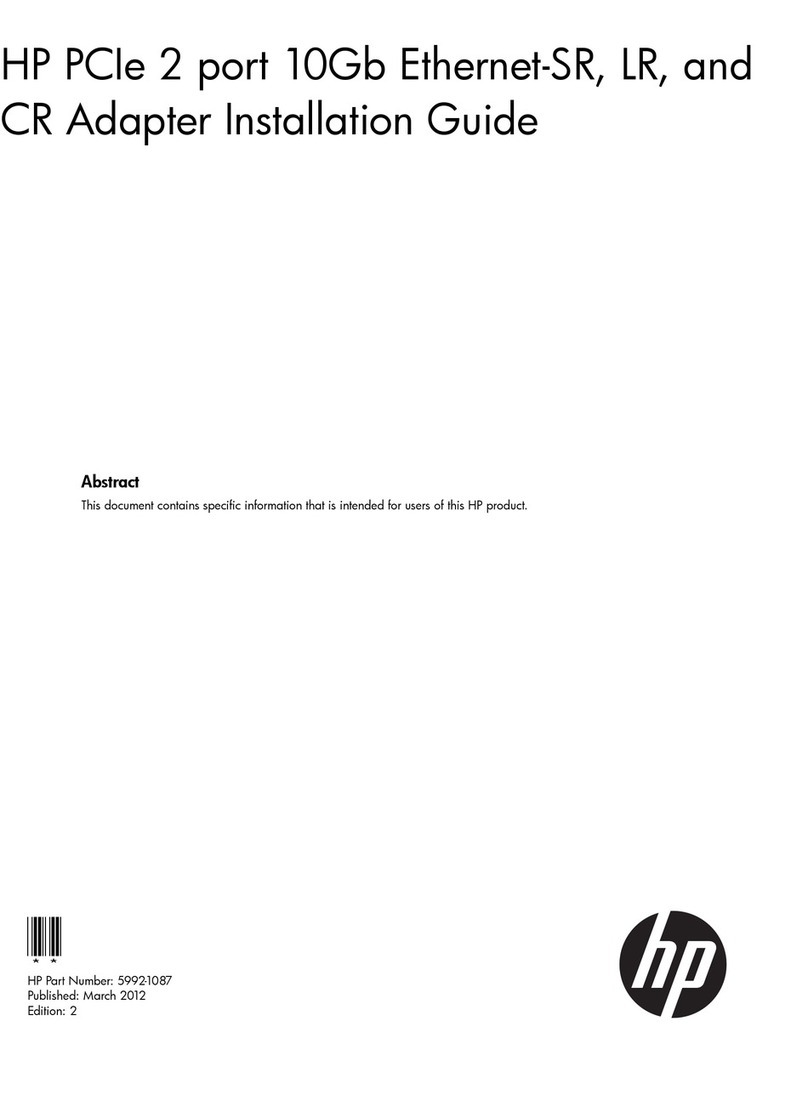OSS OSS-PCIe-HIB35-X4 User manual

PCIe x4 Gen2 Host Cable Adapter with PCIe Switch
Model: OSS-PCIe-HIB35-x4
www.onestopsystems.com
Installation Guide
SKU: OSS-PCIe-HIB35-X4

One Stop Systems
OSS-PCIe-HIB35x4 | 2
Table of Contents
Preface 4
Advisories 4
Safety Instructions 5
1 Introduction 7
1.1 Specifications 7
1.2 Features: 7
1.3 Overview 8
1.4 PCIe Card Edge x4 9
1.5 Power 9
1.6 PCIe Cable Sideband signals 9
1.7 PLX PEX8609 9
1.8 Link LEDS 10
1.9 Board LEDs 10
1.10 Block Diagram 11
1.11 Dimensions 11
1.12 HIB card Operating Modes 12
1.13 PCI Express x4 Card Edge Connector Pin Outs 13
1.14 x4 Cable Wire Connections / Pin Outs 14
1.15 x4 Cable Signal Descriptions 15
2 Hardware Requirements 16
2.1 Hardware & System Requirements 16
2.1.1 HIB35-x4 card (Host and Target) 16
2.1.2 PCIe Slot & Motherboard Requirement 16
2.1.3 x4 iPass Cable 16
2.1.4 Expansion Chassis / backplanes 17
2.1.5 ATX Power Supply 17
2.2 Software Requirement 17
3 Installation Procedures 18
3.1 Configure Dipswitches 18
3.2 Install HIB Host card 18
3.3 Install HIB Target card 19
3.4 Install PCIe card 20
3.5 Install link cable 20
3.6 Connect ATX Power Supply 21
3.7 Power ON the system 21
4Verify Hardware 22
4.1 LED Definition 22
4.2 LED Indicator Scenarios 22

One Stop Systems
OSS-PCIe-HIB35x4 | 4
Preface
Advisories
Five types of advisories are used throughout this manual to provide helpful information, or to alert you to the potential for hardware damage
or personal injury.
NOTE
Used to amplify or explain a comment related to procedural steps or text.
IMPORTANT
Used to indicate an important piece of information or special “tip” to help you
CAUTION
Used to indicate and prevent the following procedure or step from causing damage to the equipment.
WARNING
Used to indicate and prevent the following step from causing injury.
DANGER or STOP
Used to indicate and prevent the following step from causing serious injury or significant data loss
Disclaimer: We have attempted to identify most situations that may pose a danger, warning, or caution condition in this manual. However, the
company does not claim to have covered all situations that might require the use of a Caution, Warning, or Danger indicator.

One Stop Systems
OSS-PCIe-HIB35x4 | 5
Safety Instructions
Always use caution when servicing any electrical component. Before handling the expansion chassis, read the following instructions and safety
guidelines to prevent damage to the product and to ensure your own personal safety. Refer to the “Advisories” section for advisory
conventions used in this manual, including the distinction between Danger, Warning, Caution, Important, and Note.
Always use caution when handling/operating the computer. Only qualified, experienced, authorized electronics personnel should
access the interior of the computer and expansion chassis per UL and IEC 60950-1
The power supplies produce high voltages and energy hazards, which can cause bodily harm.
Use extreme caution when installing or removing components. Refer to the installation instructions in this manual for precautions
and procedures. If you have any questions, please contact Technical Support.
WARNING
Never modify or remove the radio frequency interference shielding from your workstation or expansion unit. To do so may
cause your installation to produce emissions that could interfere with other electronic equipment in the area of your
system.
When Working Inside a Computer
1. Before taking covers off a computer, perform the following steps:
2. Turn off the computer and any peripheral devices.
3. Disconnect the computer and peripheral power cords from their AC outlets or inlets in order to prevent electric shock or system
board damage.
In addition, take note of these safety guidelines when appropriate:
To help avoid possible damage to systems boards, wait five seconds after turning off the computer before removing a component,
removing a system board, or disconnecting a peripheral device from the computer.
When you disconnect a cable, pull on its connector or on its strain-relief loop, not on the cable itself. Some cables have a connector
with locking tabs. If you are disconnecting this type of cable, press in on the locking tabs before disconnecting the cable. As you pull
connectors apart, keep them evenly aligned to avoid bending any connector pins. Also, before connecting a cable, make sure both
connectors are correctly oriented and aligned.
CAUTION
Do not attempt to service the system yourself except as explained in this manual. Follow installation
instructions closely.

One Stop Systems
OSS-PCIe-HIB35x4 | 6
Protecting Against Electrostatic Discharge
Electrostatic Discharge (ESD) Warning
Electrostatic Discharge (ESD) is the enemy of semiconductor devices. You should always take precautions to eliminate any
electrostatic charge from your body and clothing before touching any semiconductor device or card by using an
electrostatic wrist strap and/or rubber mat.
Static electricity can harm system boards. Perform service at an ESD workstation and follow proper ESD procedures to reduce the risk of
damage to components. We strongly encourage you to follow proper ESD procedures, which can include wrist straps and smocks, when
servicing equipment.
You can also take the following steps to prevent damage from electrostatic discharge (ESD):
When unpacking a static-sensitive component from its shipping carton, do not remove the component’s anti-static packaging
material until you are ready to install the component in a computer. Just before unwrapping the anti-static packaging, be sure you
are at an ESD workstation or are grounded.
When transporting a sensitive component, first place it in an anti-static container or packaging.
Handle all sensitive components at an ESD workstation. If possible, use anti-static floor pads and workbench pads.
Handle components and boards with care. Do not touch the components or contacts on a board. Hold a board by its edges or by its
metal mounting bracket.

One Stop Systems
OSS-PCIe-HIB35x4 | 7
1 Introduction
The PCIe x4 Gen 2 cable adapter with PCIe switch (including NT port and DMA controller0 is a PCIe half-height add-in card with a PCIe x4 cable
connector on the slot cover. It operates in upstream or downstream mode with Dipswitch setting change. The host cable adapter installs in the
PCIe slot of a host server and the target cable adapter installs in the Target slot / Upstream slot of the OSS backplane.
Part numbers:
OSS-PCIE-HIB35-x4-T (Target)
OSS-PCIE-HIB35-x4-H (Host)
1.1 Specifications
Item
Description
Form Factor
PCIe x4 half-height, half-length
Dimensions
2.7”x 3.895”
Bandwidth / Backplane
Interface
PCIe x4 Gen2
Power
0.4A @ 12V
Connector
PCIe x4 Cable connector
PCIe x4 Edge connector
PCIe Switch
5.0 Gbps 4-lane PCIe Gen2
PLX PEX8609
Bracket
Standard and low profile brackets available
With two LEDs on the bracket
Operating Temperature
0˚C to +50˚C environment
Operating Humidity
10% to 90% relative humidity non-condensing
Storage Humidity
5% to 95% relative humidity non-condensing
Shock
30g Acceleration Peak (11ms pulse)
Industry Specifications
PCIe External Cabling Specification, Rev. 1.0
PCI Express™ Card Electromechanical
Specification, Rev. 2.0
PCI Express ® Base Specification, Rev. 3.0
ATX Specification, Version 2.2
Agency Compliance
• FCC Class B
• CE
• RoHS
Operating System
Windows 10, Windows Server 2012 R2; Linux OS based
1.2 Features:
Fits into PCIe x4, x8, or x16 slot
Operates in Host and Target modes (with Dipswitch setting change)
Supports Spread Spectrum Clock Isolation
Low Profiler Design
Bracket LINK LED status indicator
8-Lane switch with built-in DMA controller
Ipass x4 external cable connector

One Stop Systems
OSS-PCIe-HIB35x4 | 8
1.3 Overview

One Stop Systems
OSS-PCIe-HIB35x4 | 9
1.4 PCIe Card Edge x4
The PCIe Card edge will be directly routed x4 interface to the PLX Chip
In host mode, the add-in card will accept a clock as an input.
In target mode, the add-in card will drive a clock. It will also provide a reset output and a PS_ON# signal.
1.5 Power
Power is provided by the PCI-e card slot.
Power required by internal components of OSS-PCIe-HIB-35-x4 is estimated to be 4 watts when both ports are fully linked and
operating in Gen2 mode.
Cable power is to be provided per PCIe cable specification. When an active cable (powered transceiver) is used, additional power is
required from the PCI-e card slot.
Power will be supplied +3.3V, +3.3Vaux through Card Edge.
Some power rails will be derived from the onboard circuitry.
1.6 PCIe Cable Sideband signals
All Cable sideband signals CPERST#, CPWRON, CPRSNT#, CWAKE# to be connected per the PCIe Cable specification.
Additional isolation of signal CE_PWRON# (card edge power control) shall be provided by a physical switch.
This switch allows user to electrically isolate this signal from the card edge connector.
*The target card and expansion unit are powered UP instantly upon turning ON the host computer.
1.7 PLX PEX8609
Supports Non Transparent Bridging
oThe “Non-Transparent Bridging” (NTB) function enables isolation of two hosts or memory domains yet allows status and
data exchange between the two hosts or sub-systems
Integrated DMA Engine (with four DMA channels and internal buffer space)
8 Lane / 8 port PCIe Switch
PCIe Gen2 (5.0 GT/s)
Spread Spectrum Clock Isolation

One Stop Systems
OSS-PCIe-HIB35x4 | 10
1.8 Link LEDS
The four LINK status LEDs on the slot cover (bracket) show lanes that have successfully linked. Lanes 1-4 are represented by LED 0-3
OFF –Link is down
ON –Link is UP, 5.0 GT/s
Flashing LEDs –Train Unsuccessful
Blinking, 0.5 seconds ON and 0.5 seconds OFF –Link is up, 2.5 GT/S
One Green LED will show power ON
1.9 Board LEDs
There are two sets of 4 LEDs on the back of the HIB35-x4. They are located in the upper right hand corner of the board. The first set is labeled as
follows:
PWR--Power good
RST—Card edge Reset
CRST—Cable Reset
FE—PEX Fatal Error. One Red led on the card indicates a switch failure (labeled as FE)
Power LED should always be solid when the card is active.
oRST and CRST will flash when reset occurs.
oFE will be lit only when the PCIe switch has detected a fatal error.
The second set of 4 LEDs show the PCIe lane width connection through the card edge to host system. LEDs 0-3 represent lanes 1-4. These LEDs
will be solid when a link is established and off when there is NO link. If an LED is flashing, the link is training unsuccessfully.

One Stop Systems
OSS-PCIe-HIB35x4 | 11
1.10 Block Diagram
1.11 Dimensions

One Stop Systems
OSS-PCIe-HIB35x4 | 12
1.12 HIB card Operating Modes
1. Mode 1: Target Mode: In this mode, the SW1 dipswitches 1 and 2 are set to ON position. The card is ready to operate in Target
mode and must be plugged into an OSS expansion backplane “Upstream slot”.
2. Mode 2: Host Mode. In this mode, the SW1 dipswitch 1 is set to OFF and dipswitch 2 is ON. The card is ready to operate in Host
mode and it must be plugged into computer’s motherboard PCIe slot. Use Gen2 x16, x8 or x4 PCIe slot.
When the card dipswitch is configured to operate in Host mode, it cannot be installed in a target slot (Upstream slot) on
the OSS expansion backplane. It must be installed in the computer’s motherboard PCIe slot.

One Stop Systems
OSS-PCIe-HIB35x4 | 13
1.13 PCI Express x4 Card Edge Connector Pin Outs
Pin #
Name
Pin #
Name
Mechanical Key
B1
+12V
A1
PRSNT1#
B2
+12V
A2
+12V
B3
+12V
A3
+12V
B4
GND
A4
GND
B5
SMCLK
A5
TCK
B6
SMDAT
A6
TDI
B7
GND
A7
TDO
B8
+3.3V
A8
TMS
B9
TRST#
A9
+3.3V
B10
3.3Vaux
A10
+3.3V
B11
WAKE#
A11
PERST#
B12
RSVD
A12
GND
End of the x1 Connector
B13
GND
A13
REFCLK+
B14
PETp0
A14
REFCLK-
B15
PETn0
A15
GND
B16
GND
A16
PERp0
B17
PRSNT2#
A17
PERn0
B18
GND
A18
GND
B19
PETp1
A19
RSVD
End of the x4 Connector
B20
PETn1
A20
GND
B21
GND
A21
PERp1
B22
GND
A22
PERn1
B23
PETp2
A23
GND
B24
PETn2
A24
GND
B25
GND
A25
PERp2
B26
GND
A26
PERn2
B27
PETp3
A27
GND
B28
PETn3
A28
GND
B29
GND
A29
PERp3
B30
RSVD
A30
PERn3
B31
PRSNT2#
A31
GND
B32
GND
A32
RSVD

One Stop Systems
OSS-PCIe-HIB35x4 | 14
1.14 x4 Cable Wire Connections / Pin Outs
Pin #
Cable Side 1
Cable Side 2
Pin #
A1 A4 A7 A10 A13 A16
B1 B4 B7 B10 B13
GND
Drain Wires
GND
A1 A4 A7 A10 A13 A16 B1 B4
B7 B10 B13
A2
PETp0
Differential Pair
PERp0
B2
A3
PETn0
PERn0
B3
A5
PETp1
Differential Pair
PERp1
B5
A6
PETn1
PERn1
B6
A8
PETp2
Differential Pair
PERp2
B8
A9
PETn2
PERn2
B9
A11
PETp3
Differential Pair
PERp3
B11
A12
PETn3
PERn3
B12
A14
CREFCLK+
Differential Pair
CREFCLK+
A14
A15
CREFCLK
CREFCLK-
A15
A17
SB_RTN
Hook-up Wire
SB_RTN
A17
A18
CPRSNT#
Hook-up Wire
CPRSNT#
A18
A19
CPWRON
Hook-up Wire
CPWRON
A19
B2
PERp0
Differential Pair
PETp0
A2
B3
PERn0
PETn0
A3
B5
PERp1
Differential Pair
PETp1
A5
B6
PERn1
PETn1
A6
B8
PERp2
Differential Pair
PETp2
A8
B9
PERn2
PETn2
A9
B11
PERp3
Differential Pair
PETp3
A11
B12
PERn3
PETn3
A12
B14
PWR
NC
PWR
B14
B15
PWR
NC
PWR
B15
B16
PWR_RTN
NC
PWR_RTN
B16
B17
PWR_RTN
NC
PWR_RTN
B17
B18
CWAKE#
Hook-up Wire
CWAKE#
B18
B19
CPERST#
Hook-up Wire
CPERST#
B19
Backshell
Chassis Ground
Overall Cable Braid
Chassis Ground
Backshell
*NC: Not Connected

One Stop Systems
OSS-PCIe-HIB35x4 | 15
1.15 x4 Cable Signal Descriptions
PIN
#
Signal
Description
A1
GND
Ground reference for PCI Express transmitter Lanes
A2
PETp0
Differential PCI Express transmitter Lane 0 5
A3
PETn0
Differential PCI Express transmitter Lane 0 5
A4
GND
GND Ground reference for PCI Express transmitter Lanes
A5
PETp1
Differential PCI Express transmitter Lane 1 5
A6
PETn1
Differential PCI Express transmitter Lane 1
A7
GND
Ground reference for PCI Express transmitter Lanes
A8
PETp2
Differential PCI Express transmitter Lane 2
A9
PETn2
Differential PCI Express transmitter Lane 2
A10
GND
Ground reference for PCI Express transmitter Lanes
A11
PETp3
Differential PCI Express transmitter Lane 3
A12
PETn3
Differential PCI Express transmitter Lane 3
A13
GND
Ground reference for PCI Express transmitter Lanes
A14
CREFCLK+
Differential 100MHz cable reference clock
A15
CREFCLK
Differential 100MHz cable reference clock
A16
GND
GND Ground reference for cable reference clock
A17
SB_RTN
Signal return for single ended sideband signals
A18
CPRSNT#
Used for detection of whether a cable is installed and the downstream subsystem is powered
A19
CPWRON
Turns power on / off to slave-type downstream subsystems
B1
GND
Ground reference for PCI Express receiver Lanes
B2
PERp0
Differential PCI Express receiver Lane 0
B3
PERn0
Differential PCI Express receiver Lane 0
B4
GND
Ground reference for PCI Express receiver Lanes
B5
PERp1
Differential PCI Express receiver Lane 1
B6
PERn1
Differential PCI Express receiver Lane 1
B7
GND
Ground reference for PCI Express receiver Lanes
B8
PERp2
Differential PCI Express receiver Lane 2
B9
PERn2
Differential PCI Express receiver Lane 2
B10
GND
Ground reference for PCI Express receiver Lanes
B11
PERp3
Differential PCI Express receiver Lane 3
B12
PERn3
Differential PCI Express receiver Lane 3
B13
GND
Ground reference for PCI Express receiver Lanes
B14
PWR
+3.3VCable power
B15
PWR
+3.3VCable Power
B16
PWR RTN
Cable power return
B17
PWR RTN
Cable power return
B18
CWAKE#
Power management signal for wakeup events (optional)
B19
CPERST#
Cable PERST#
PETp(x)
PCI Express Transmit Positive signal of (x) pair.
PETn(x)
PCI Express Transmit Negative signal of (x) pair.
PERp(x)
PCI Express Receive Positive signal of (x) pair.
PERn(x)
PCI Express Receive Negative signal of (x) pair.
CREFCLK+/-
Cable REFerence CLocK: Provides a reference clock from the host system to the remote system.
SB_RTN
Return path for single ended signals from remote systems.
CPRSNT#
Cable Present: Indicates the presence of a device beyond the cable.
PWR
Power: Provides local power for in-cable redriver circuits. Only needed on long cables (Power does not go across the
cable.)
PWR_RTN
Po
Provides local power return path for PWR pins.
CWAKE#
Cable WAKE
CPERST#
Cable PCI Express Reset

One Stop Systems
OSS-PCIe-HIB35x4 | 16
2Hardware Requirements
The following steps will guide you through the installation of your HIB35-x4 Host and Target cards.
2.1 Hardware & System Requirements
1. Computer / Server motherboard with x4 or x8 Gen2 PCIe slot
2. HIB35-x4-H, qty 1: Host card
3. HIB35-x4-T, qty 1: Target card
NOTE: The HIB35-x4 card works in pair (one as host card and other as target card)
4. One x4 iPass cable
5. OSS Expansion chassis with Gen2 backplane, or OSS expansion backplane and power supply.
2.1.1 HIB35-x4 card (Host and Target)
A pair of HIB35-x4 card (Target and Host cards)
2.1.2 PCIe Slot & Motherboard Requirement
For Host Adapter card: Use a server-computer type motherboard that has a Gen2 x8, x4 or x16 PCIe slot in order for the card to operate to its
max performance. The Host adapter card is recommended to be installed in a x16 connector.
2.1.3 x4 iPass Cable
Use x4 iPass cable for connecting between host card and target card.

One Stop Systems
OSS-PCIe-HIB35x4 | 17
2.1.4 Expansion Chassis / backplanes
You need an expansion chassis with Gen2 or Gen3 backplane . Photos below are example of an OSS backplanes and an expansion unit. OSS
offers a multitude of expansion units and expansion backplanes, please visit our website to get further details on all products. Here is the web
link: https://www.onestopsystems.com
The HIB card has custom pin out that unique to OSS and only OSS Target adapters will work in the upstream slot of our
expansion backplanes.
2.1.5 ATX Power Supply
If you are using an OSS backplane with the HIB35-x4 card you need a power supply unit to provide power. A standard ATX power supply will
work with the boards.
2.2 Software Requirement
1. Computer running Windows 7, 8, 10 and or Server
2. No driver is needed for the OSS-HIB35-x4

One Stop Systems
OSS-PCIe-HIB35x4 | 18
3Installation Procedures
3.1 Configure Dipswitches
Select the appropriate card to use makes sure you have the correct host and target cards. Below are photos to help you
identify between Target card and Host card.
Set the Dipswitch settings on each card. When using the card as host, set the SW1 Dipswitch 1=OFF and 2=ON. When using the card as target,
set the SW1 Dipswitches 1 & 2 to ON.
3.2 Install HIB Host card
Power down the host computer first before installing the host card. Do not install the host card while the computer is ON.
Install the HIB35-x4 host card into the available PCIe slot in the computer’s motherboard. Use a x4, x8 or x16 Gen2 PCIe slot.
Make sure to secure the card with a screw.

One Stop Systems
OSS-PCIe-HIB35x4 | 19
3.3 Install HIB Target card
Do not plug in the target card while expansion unit or the expansion backplane is ON as this can damage the board. Turn OFF the
unit first before installing the card.
The HIB Target card will only work in the OSS backplane “Upstream”slot. It will not function in the downstream slot or the
end-point slot of the backplane.
Install the Target card in the OSS expansion backplane. Plug-in the target card in the “Upstream” slot.
Photos below are different backplanes showing where the location of the “Upstream”slot.

One Stop Systems
OSS-PCIe-HIB35x4 | 20
3.4 Install PCIe card
Plug-in your 3rd party PCIe card in the expansion backplane. Use the downstream slot on the OSS backplane. See photos below showing where
the location of the downstream slot / end-point slot.
3.5 Install link cable
Connect the PCIe iPass x4 cable between the Host and Target cards. Plug in the cable to the Host card.
Plug in the other end of the cable to the target card. Make sure the cable is firmly latched in to the cable connectors of the card.
Photo below is a block diagram of an OSS expansion unit linked to a host server / computer.
This manual suits for next models
2
Table of contents
Other OSS PCI Card manuals


